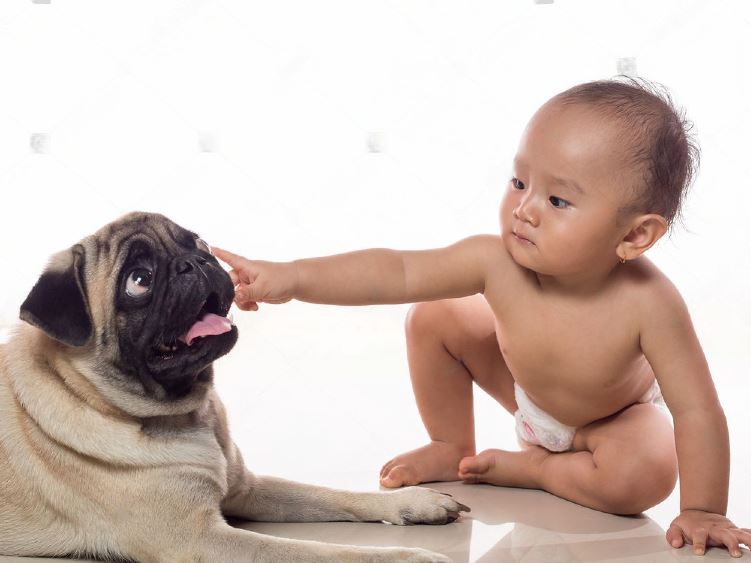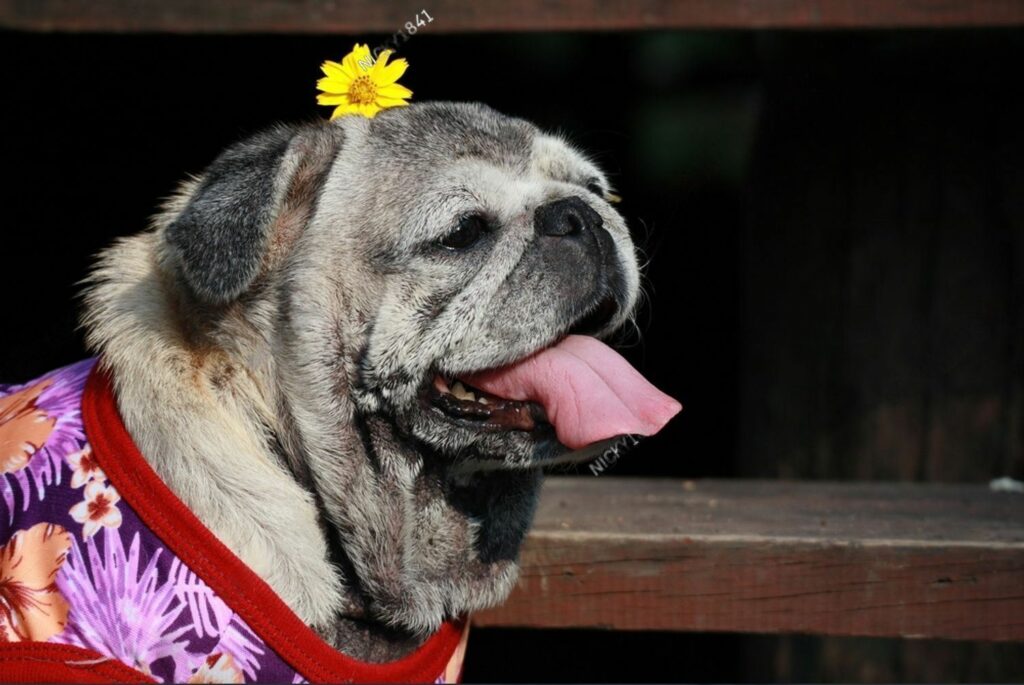When Do A Pugs Baby Teeth Fall Out? While all dog breeds lose their baby teeth, the timing can vary. For example, pugs typically lose their baby teeth between 4 and 6 months old.
This can be a trying time for both pug parents and their pups, as teething can cause discomfort. Knowing when to expect your pug’s baby teeth to fall out can help you be prepared for the process.
Between the ages of 8 weeks and 8 months, pugs go through a teething phase. During this stage, they will lose their baby teeth and start to erupt new adult teeth. Drooling, impatience, and gnawing on objects are a few frequent teething signs and symptoms. Pugs develop their 42 adult teeth by the time they are eight months old.
When Do A Pugs Baby Teeth Fall Out?

The puppy teething period might last anywhere from 8 weeks and 8 months. Puppies may start losing their baby teeth as early as two weeks old. To make place for 42 permanent adult teeth, their baby teeth will fall out about three to four months of age. Most of the time, pugs will lose their baby teeth between 4 and 6 months old.
As they mature into adult pugs, pups lose their milk teeth. Their adult teeth will eventually erupt to take the place of their baby teeth. Pugs have a total of 42 teeth as adults.
Signs of Teething in Pug Puppies

The first indicator of teething is when a child starts chewing on everything in sight, as you may have already seen with your Pug puppy. Here is the entire list of teething symptoms.
- Blood spots on toys: Pugs often gnaw on their toys to ease their teething discomfort. When an infant’s teeth erupt or the gums become inflamed, this may cause bleeding.
- Drooling a lot: Teething pups may drool, so you should expect to notice more saliva flowing from their mouths than normal.
- More chewing: Chewing is the most effective approach for teething Pugs to reduce their discomfort. Keep them away from anything you value and give them chew toys!
- Sore gums: Gum inflammation and redness are common in teething Pugs. Due to the bigger adult teeth coming through, they will seem to be very painful.
- A change in behavior: Your Pug puppy will sometimes experience discomfort and may even get agitated. With plenty of attention and teething toys, try to divert their interest.
- Mild fever: If you’ve ever had children, you know that while they’re teething, they sometimes become a bit hot. Puggle pups are similar.
- Misaligned teeth: The adult teeth may not always push the baby teeth out of the way when they erupt. As the two teeth coexist until the milk tooth comes out, your Pug can have a little redneck expression.
The Teething Stage of a Pug puppy

Pugs usually lose their baby teeth between 4 and 6 months old. This can be a trying time for both pug parents and their pups, as teething can cause discomfort. There are a few things you can do to help ease the process:
- Keep your Pug puppy entertained with plenty of chew toys and plenty of belly rubs.
- Don’t scold your Pug when they start to chew on inappropriate objects – it may just be a sign that they’re in pain.
- Make sure you get your Pug to the vet if there are any signs of fever, redness, or bleeding.
- Allow your Pug to rest when they’re feeling pain relief from their teething.
- Don’t try to force the baby teeth out – this can cause more pain and damage.
- Offer your Pug human milk if they’re not getting enough from their dog food.
- Allow time for the baby teeth to come out and for the adult teeth to take their place.
1. Between 2 and 3 weeks old
Pugs are born toothless, between two and three weeks old. Baby teeth, also known as milk teeth, don’t truly begin to erupt in pug puppies until they are at least 14 days old.
The puppy’s baby teeth start to erupt at the same time as their eyes start to open, which is important for their general dental development. The first two weeks of a puppy’s existence are a crucial period for growth and development into the beloved and well-known Pug.
Of course, because Pug pups shouldn’t be separated from their mothers until they are at least 8 weeks old, the majority of Pug owners won’t ever get to see this period in their dental development.
Your Pug’s baby teeth will erupt in the following order:
- leading teeth (incisors).
- teeth canines (at which point they can start on solid foods).
- Prior teeth (stop coming through after about 6 weeks).
Your Pug should have developed all 28 of its milk teeth by the time it is 8 weeks old.
2. From the age of 12 weeks
The teething period is the following stage of dental development. Pugs’ milk teeth don’t last as long as you may expect, and it won’t be long until the adult teeth begin to erupt.
3. Age of 7 to 8 months
At roughly 7 to 8 months old, pug pups usually cease teething. This is not always the case, however, since some Pugs may cease teething before this age or even later.
4. 20–24 weeks
The majority of Pug pups will finish teething when they are 6 months old, but it’s not a precise science, so don’t be shocked if it takes longer.
Compared to their newborn milk teeth, pug adult teeth take significantly longer to develop and erupt. The molars in the rear are the most difficult to remove.
Your 8-month-old Pug puppy should no longer be teething at the absolute latest. After that age, anything would be rare yet not unheard of. Now that most Pugs have all 42 adult teeth,
How to Properly Care for Your Pug’s Teeth

Pugs are known for their cute, wrinkly faces, but did you know that they are also prone to dental problems? Because of their short snouts, pugs often have crowded teeth, which can lead to tooth decay and gum disease.
To keep your pug’s teeth healthy, it’s important to brush them regularly with dog-specific toothpaste. You should also have your pug’s teeth checked by a veterinarian at least once a year.
Additionally, avoid giving your pug hard or chewy treats, as these can damage their teeth. By following these simple tips, you can help ensure that your pug has a healthy smile for years to come.
How to Tell if Your Pug is Having Dental Problems

Pugs are susceptible to a number of health problems, including dental problems. Because of their short snouts, pugs often have crowded teeth, which can lead to tooth decay and other problems.
There are a few signs that your pug may be having dental problems, including bad breath, excessive drooling, difficulty eating, and pawing at the mouth. If you notice any of these signs, take your pug to the vet for an evaluation.
Should I Be Concerned If My Pug Is Losing Teeth?
The discomfort that a teething puppy experience is often understood by pet owners. If the puppy is healthy and acting normally, such as eating, drinking, exploring, playing, or interacting with people, there is no reason to be concerned. It could hurt more than normal if the puppy is unhappy and not acting in any of these ways. In this situation, take your dog to the vet.
Final Thoughts: When Do A Pugs Baby Teeth Fall Out?
Knowing when to expect your Pug’s baby teeth to fall out can help you be prepared for the process. Between the ages of 8 weeks and 8 months, pugs go through a teething phase. During this stage, they will lose their baby teeth and start to erupt new adult teeth. Drooling, impatience, and gnawing on objects are a few frequent teething signs and symptoms. Pugs develop their 42 adult teeth by the time they are eight months old.
Can Dogs Eat Bread? Read This Before Feeding It To Them
Can Dog Eat Pineapple? Pineapple, the Fruit vs Pineapple, the Treat
Can Dog Have Beef Jerky? The Truth About This Healthy Snack
Can Dog Have Broccoli? – Everything You Need to Know
Can Dogs Eat Eggplant? The Truth, Explained
Can Dog Eat Eggs – Everything You Need to Know About Eggs and Your Dog
How Long Can a Dog Go Without Food

